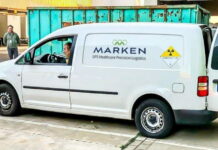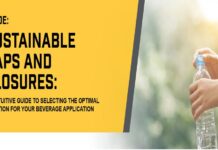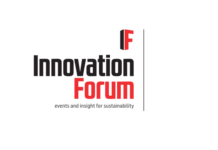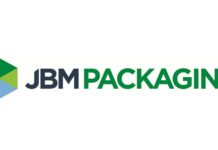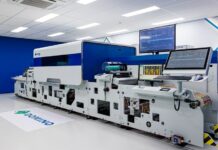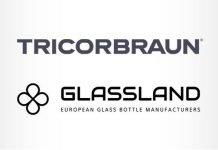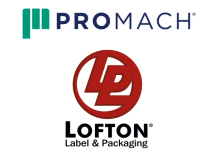Polyethylene Terephthalate (PET) resin is a versatile polymer with high strength, lightweight, and recyclability characteristics. The PET resin market is set to experience significant growth in the coming years as the demand for sustainable and efficient materials increases worldwide. According to recent market reports, the industry is expected to witness significant growth, with its worth anticipated to soar to new heights by 2032.
PET resin is extensively used in producing bottles, films, sheets, and other products in industries like packaging, automotive transportation, construction, and textile. Its unique fusion of attributes, including transparency, durability, and chemical resistance, accounts for its selection as the material of choice in countless applications. Additionally, as the worldwide movement toward sustainability continues to grow, the ability to recycle PET resin is becoming more attractive to both industries and consumers, cementing its role as an essential material for the future.
A Destination in the Design of Industrial Growth
Market growth PET resin market has maintained stable growth over the past five years and is projected to grow significantly in the next decade. According to a recent report from SkyQuest, the global PET resin market was valued at USD 34 billion and is estimated to grow at a CAGR of approximately 6.2% between 2023 and 2032, with its market value reaching over USD 60 billion by the end of the forecast period. The phenomenal growth is supported by a few aspects that are transforming the dynamic of the industry.
One of the prominent end-user segments driving the market growth is the packaging industry, which holds a significant share in PET resin consumption. PET is widely used in manufacturing beverage bottles, food containers, and other types of packaging because PET is lighter, inexpensive to produce, and an excellent barrier to oxygen and carbon dioxide which helps preserve the quality of packaged products. The growing demand for bottled water, carbonated beverages, and ready-to-eat food products is driving demand for PET resin, especially in developing economies, where rapid urbanization and changing lifestyles have led to increased growth of the packaging sector.
Additionally, the growing trend of e-commerce and online food delivery services has also contributed to the increased demand for PET-based packaging products. Companies including e-commerce platforms rely on durable and lightweight packaging measures for making sure safe delivery of products. Hence, the demand for PET resins is still strong, as commerce evolves into its digital ecosystem, offering everything, thus making this material an integral component in global packaging business.
Importance of Recycling and Sustainable Practices
A significant trend influencing the future of the PET resin market is the increasing focus on sustainability. As governments, companies and consumers prioritize green solutions, the recyclability of PET resin has become a selling point. PET, unlike many other thermoplastics, is known to be repeatedly recyclable without losing its properties, which has made it a popular choice for industries that are making efforts to reduce their environmental impact.
Adoption of rPET is on the rise among the Nepal Packaging Market, with new eco-friendly bottles, containers, and films being manufactured. Top beverage companies including Coca-Cola and PepsiCo have pledged that a significant percentage of their packaging will be made from rPET as part of their sustainability targets. As an example, Coca-Cola has a goal for its packaging to be 100 percent recyclable by 2030 — with a significant percentage coming from recycled materials.
Flourishing legislation to combat plastic waste is also fuelling PET recycling initiatives. For instance, the European Union’s Single-Use Plastics (SUP) Directive states that PET bottles will need to contain a minimum 25% recycled content by 2025 and 30% by 2030. Moreover, such regulations are likely to drive the rPET segment in the overall downstream PET resin market and bolsters its future outlook.
Technological Innovations and Advancements
The PET resin market is observing high growth due to the increasing need of innovation and technology. These processes include the ability to produce PET thermoplastic elastomers, a new generation of high-performance grades of polymer blends, and higher-clarity resins and additives with unique properties under development are being driven to expand applications—and through applications. All of these developments go well beyond packaging, opening the application space for PET resin.
For example, in the automotive industry, PET resin is being utilized as a lightweight replacement for metal and glass. This reduces the total weight of vehicles, increasing fuel efficiency and safety of vehicles. Likewise, PET resin is being used to manufacture insulation materials, roofing sheets and other building components in the construction industry and its durability and resistance to environmental conditions makes it a preferred choice.
Another major innovation within the industry is bio-based PET resin, made from renewable resources like sugarcane and corn. As with conventional PET, bio-based PET has the same properties, though with less reliance on fossil-based resources it represents a more sustainable alternative. The bio-based PET is expected to find a considerable traction in the market owing to the increasing consumer demand for eco-friendly products.
Regional Dynamics and Projections for the Future
Asia-Pacific: The Most Active Region in the PET resin Market Asia Pacific is the largest consumer of PET resin globally due to rise in demand from countries such as China, India, and other Southeast Asian countries, owing to rapid growth in the packaging industry. Moreover, the rising supply of inexpensive raw materials and labor in these countries have made them potential centers for the production of PET resin.
PET resin has been widely used in North America and Europe, region with robust sustainability and recycling focus. Factors such as rising usage of rPET in these regions, along with rigid government mandates to curb plastic waste are driving the growth of the market. Growing packaging and construction activities have strengthened demand for PET resin in the Middle East and Africa.
Key players in the PET resin industry are focused on innovative solutions to cater to the diverse needs of end use industries. The market is expected to exceed US$400 billion by 2032, solidifying its place as a vital pillar of the global economy.
Conclusion
Research report on the global PET resin market has been created with a focus towards global PET resin growth and market trends. With industries and consumers alike demanding sustainability, the demand for recyclable and environment-friendly materials like PET resin is likely to shoot up. PET resin is an excellent solution, providing the versatility, durability, and recyclability to evolve with the increasingly complex needs of the packaging, automotive, construction, and textiles sectors.
Innovation and technological advancements will also define the future of the PET resin market, with companies investing in new manufacturing processes, bio-based alternatives and recycling technologies. These advancements will not only serve the economy of the future ″ to remove emissions from products, but they will also be key in addressing some of the biggest environmental challenges we face, cementing PET resin as an ever-more essential material in tomorrow’s sustainable economy.
The market growth story of PET resin as we approach 2032 is not just one of growth, it is a story of resilience, adaptability, and innovation. It is a reflection of the fundamental importance of materials science to economic advancement, while meeting highly demanding issues of sustainability and environmental responsibility. ForChem Group and other business investors hoping to leverage this momentum, the PET resin market is a promising growth area, providing equal parts economic and environmental opportunities for the economy.














